Pterocystidae Cavalier-Smith and von der Heyden 2007
Periplast ancestrally with two contrasting types of siliceous scales: tangential basal plate scales (margin not hollow and inrolled but sometimes thickened) oval, sometimes slightly (rarely markedly) narrower at one end, sometimes slightly indented on one side (rarely slightly on both) but never distinctly bilobed; outer bipartite radial spine scales typically consisting of leaf-like blade with an axial rib, usually extended apically as a projecting needle-like point (blunt or pointed, but unbranched), and lateral wings; radial scale base may be rounded or truncated and may be in the same plane as the blade or somewhat bent away from it (Pterocystis) or markedly extended as a distinct shelf or basal disc (basal wing) orthogonal to the main blade (Raineriophrys); species with a pronounced basal wing may have lateral wings that are greatly reduced or absent; if silica scales rarely secondarily missing (Chlamydaster) cell has a distinct mucous coat; funnel-shaped scales absent.
Periplast ancestrally with two contrasting types of siliceous scales: tangential basal plate scales (margin not hollow and inrolled but sometimes thickened) oval, sometimes slightly (rarely markedly) narrower at one end, sometimes slightly indented on one side (rarely slightly on both) but never distinctly bilobed; outer bipartite radial spine scales typically consisting of leaf-like blade with an axial rib, usually extended apically as a projecting needle-like point (blunt or pointed, but unbranched), and lateral wings; radial scale base may be rounded or truncated and may be in the same plane as the blade or somewhat bent away from it (Pterocystis) or markedly extended as a distinct shelf or basal disc (basal wing) orthogonal to the main blade (Raineriophrys); species with a pronounced basal wing may have lateral wings that are greatly reduced or absent; if silica scales rarely secondarily missing (Chlamydaster) cell has a distinct mucous coat; funnel-shaped scales absent.
1. Pterocystis Siemensma and Roijackers 1988
Periplast with two types of endogenous siliceous elements. Tangential plate-scales with marginal rim (not hollow). Radial or sub-radial spine scales (spicules) with a membranous base plate and a funnel-shaped shaft.
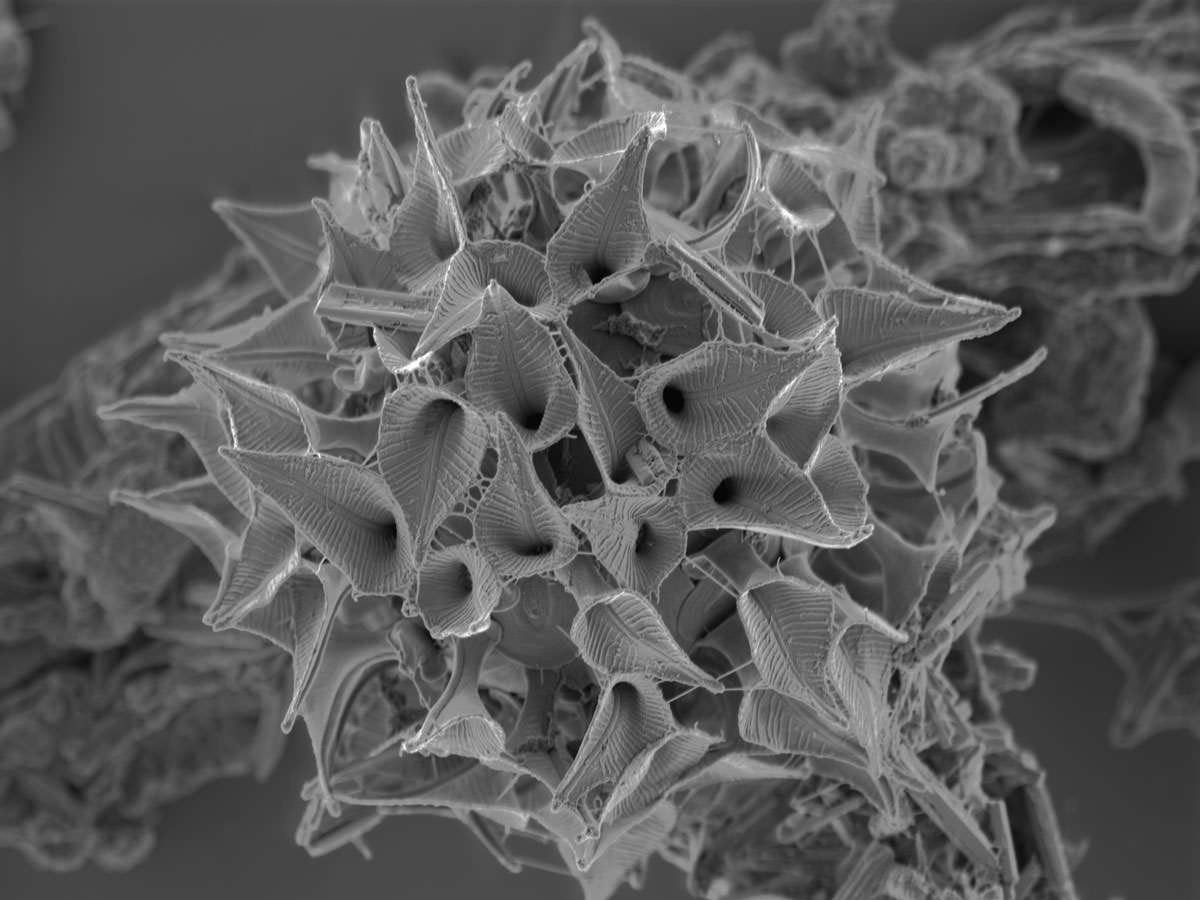
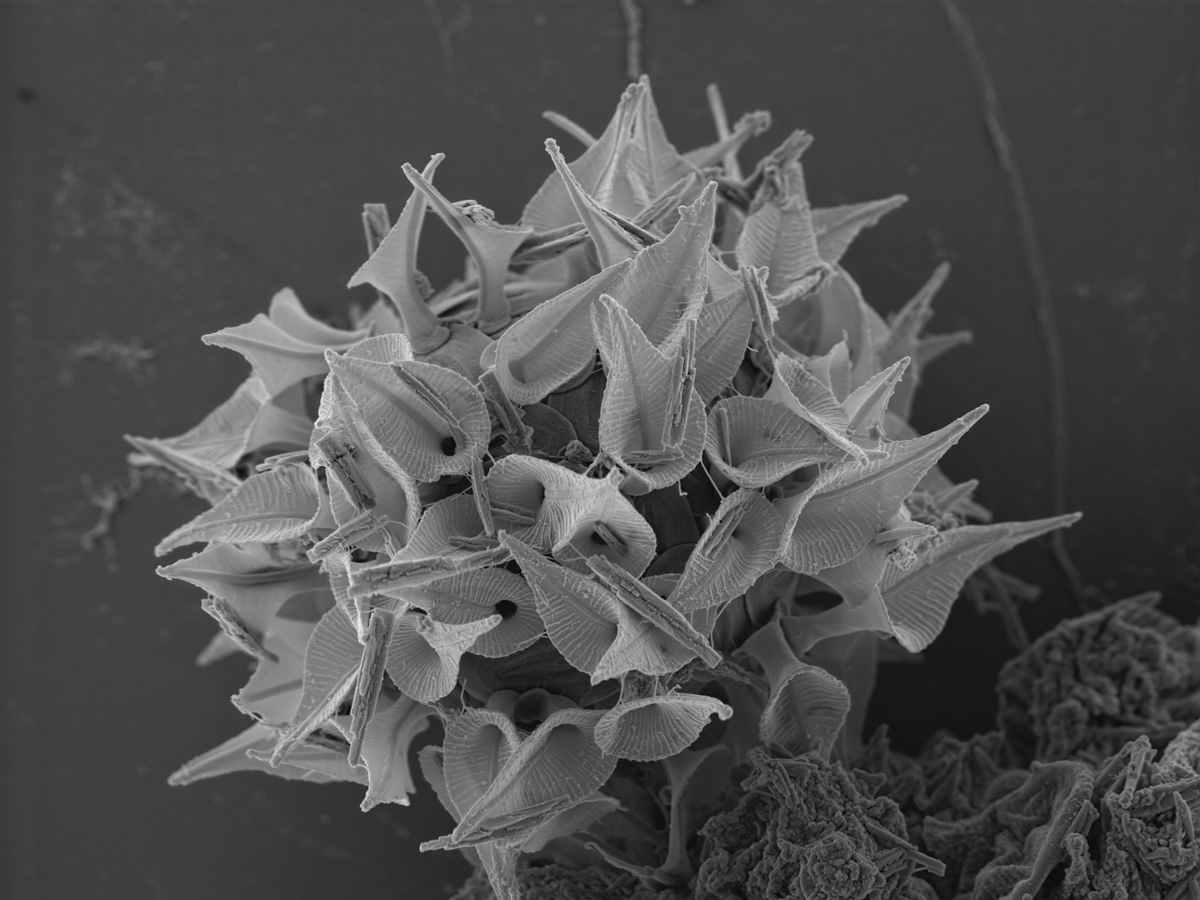
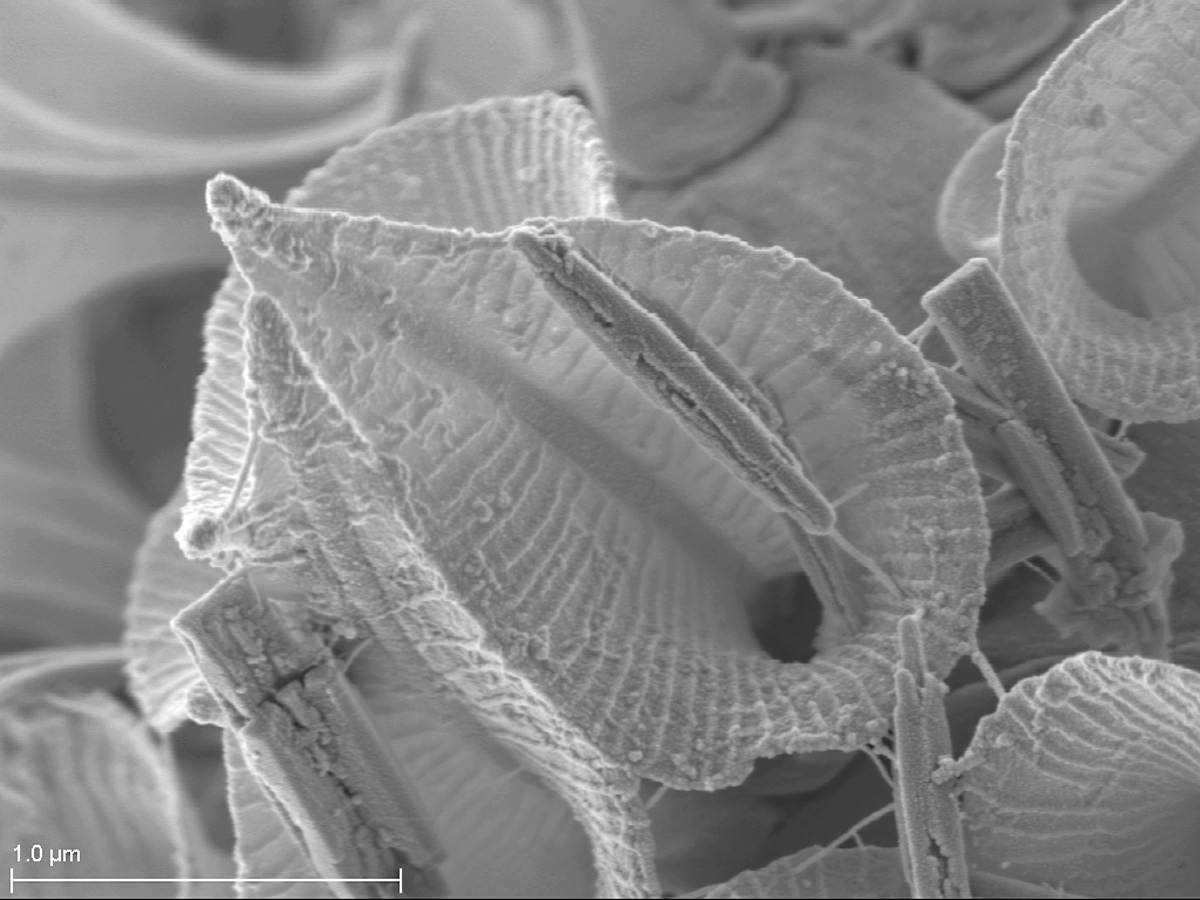
Pterocystis sp.
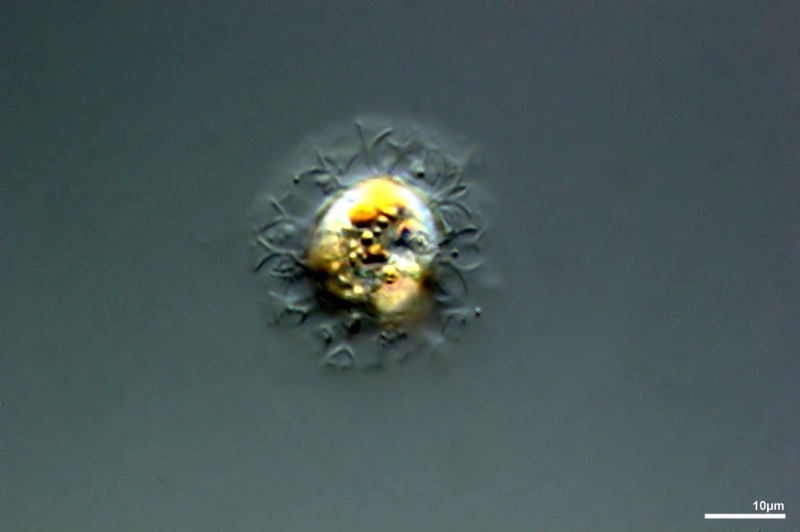
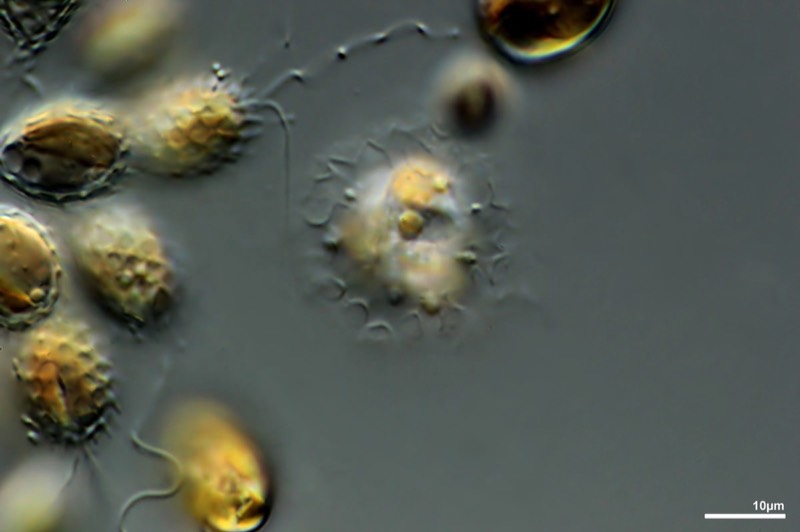
Pterocystis sp.
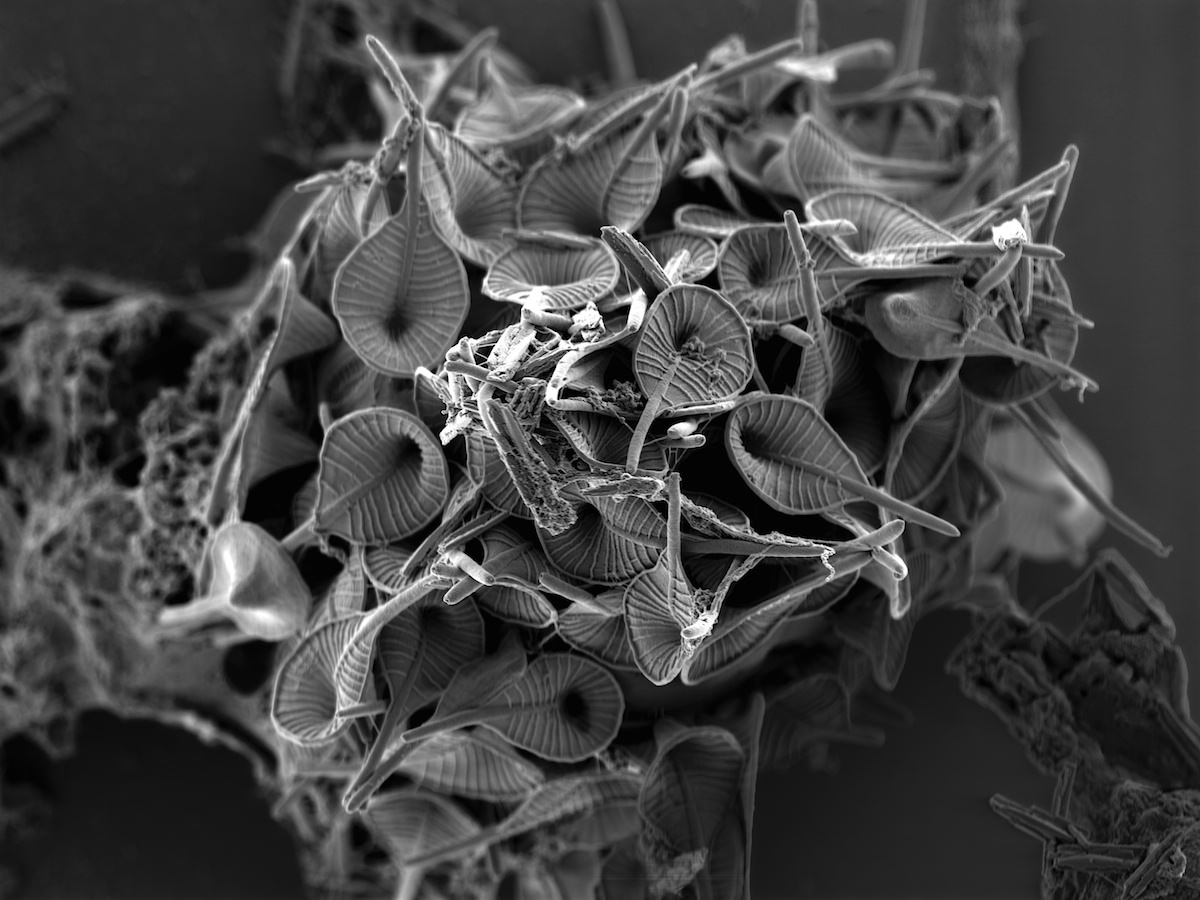
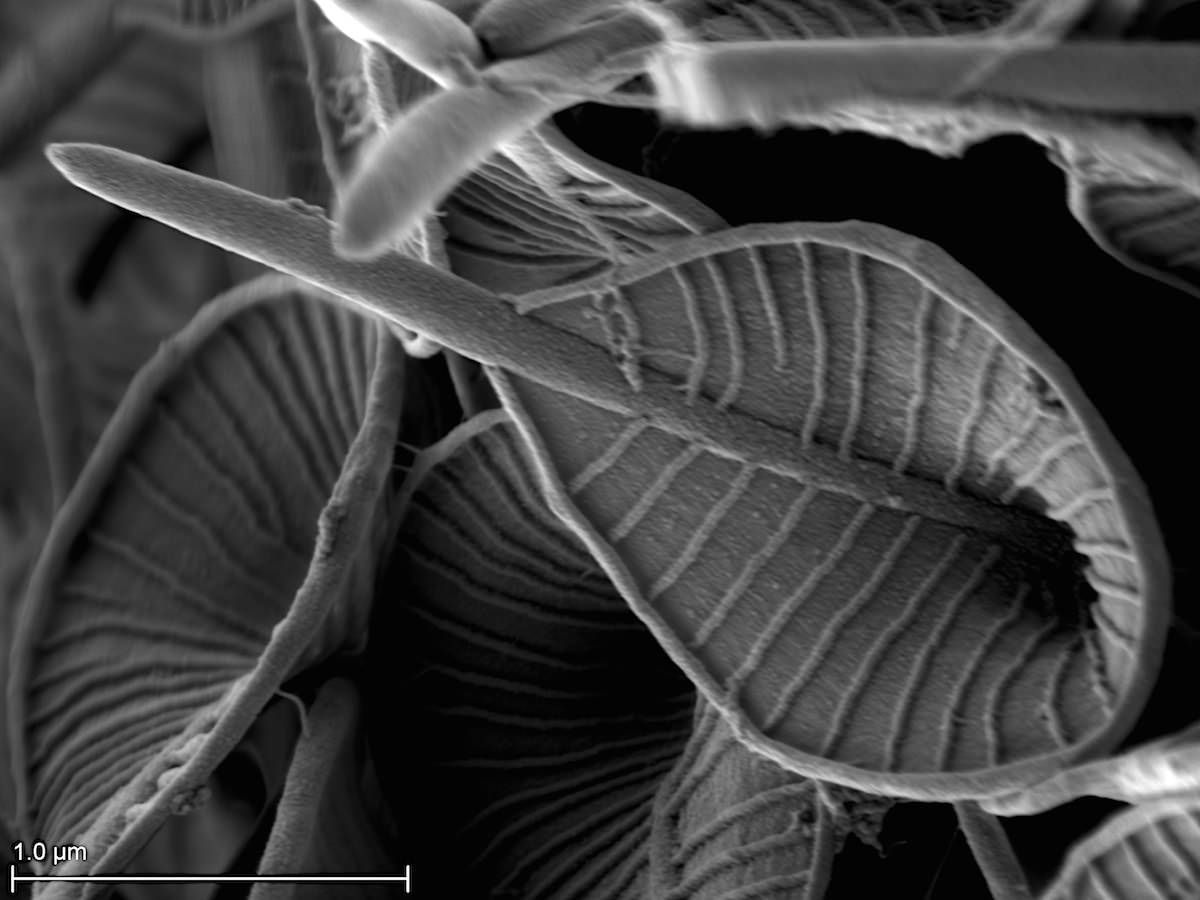
Pterocystis striata (Nicholls 1983) Siemensma and Roijackers 1988
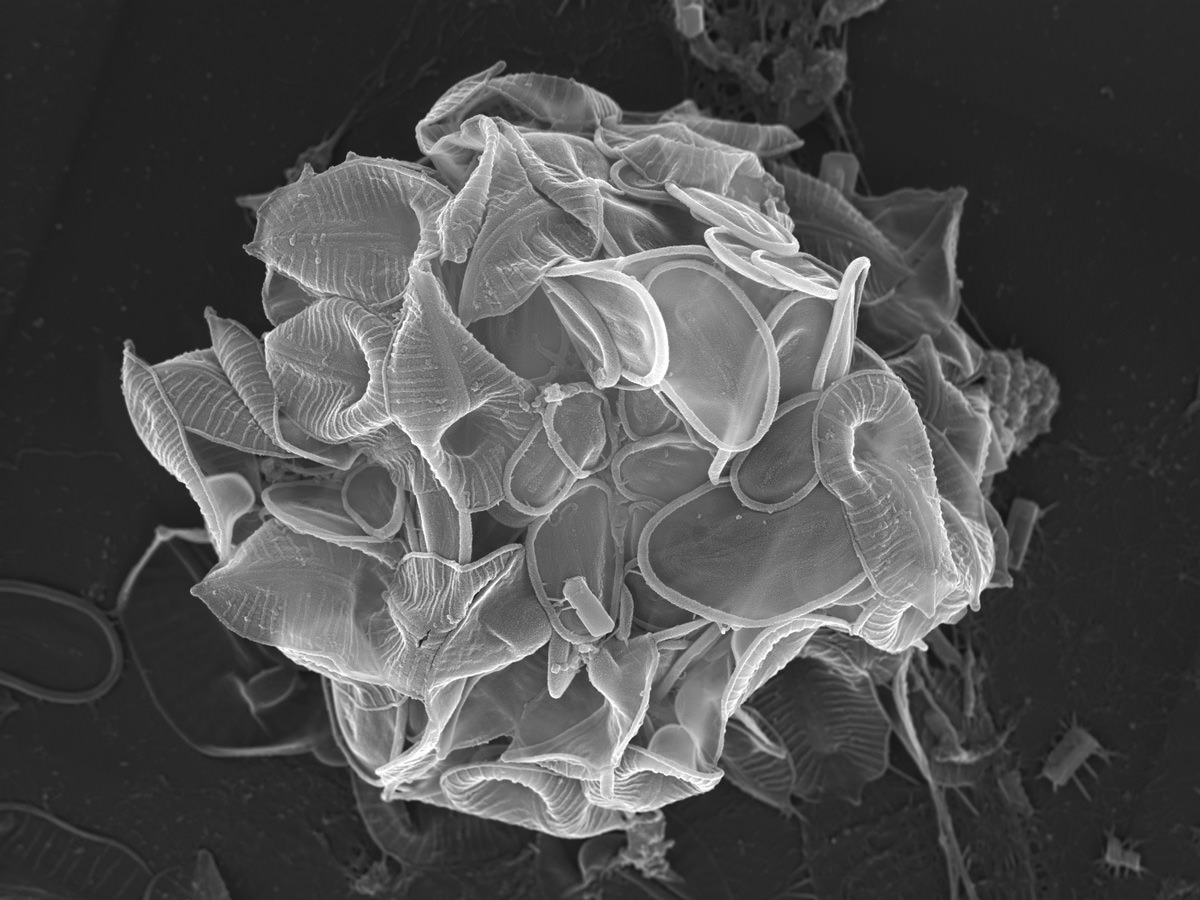
Pterocystis sp.
2. Raineriophrys Mikrjukov 2000
Periplast with two types of endogenous siliceous elements: tangential plate-scales and radial or sub-radial spine scales (spicules). The distinction between Pterocystis and Raineriophrys is a bit fuzzy.
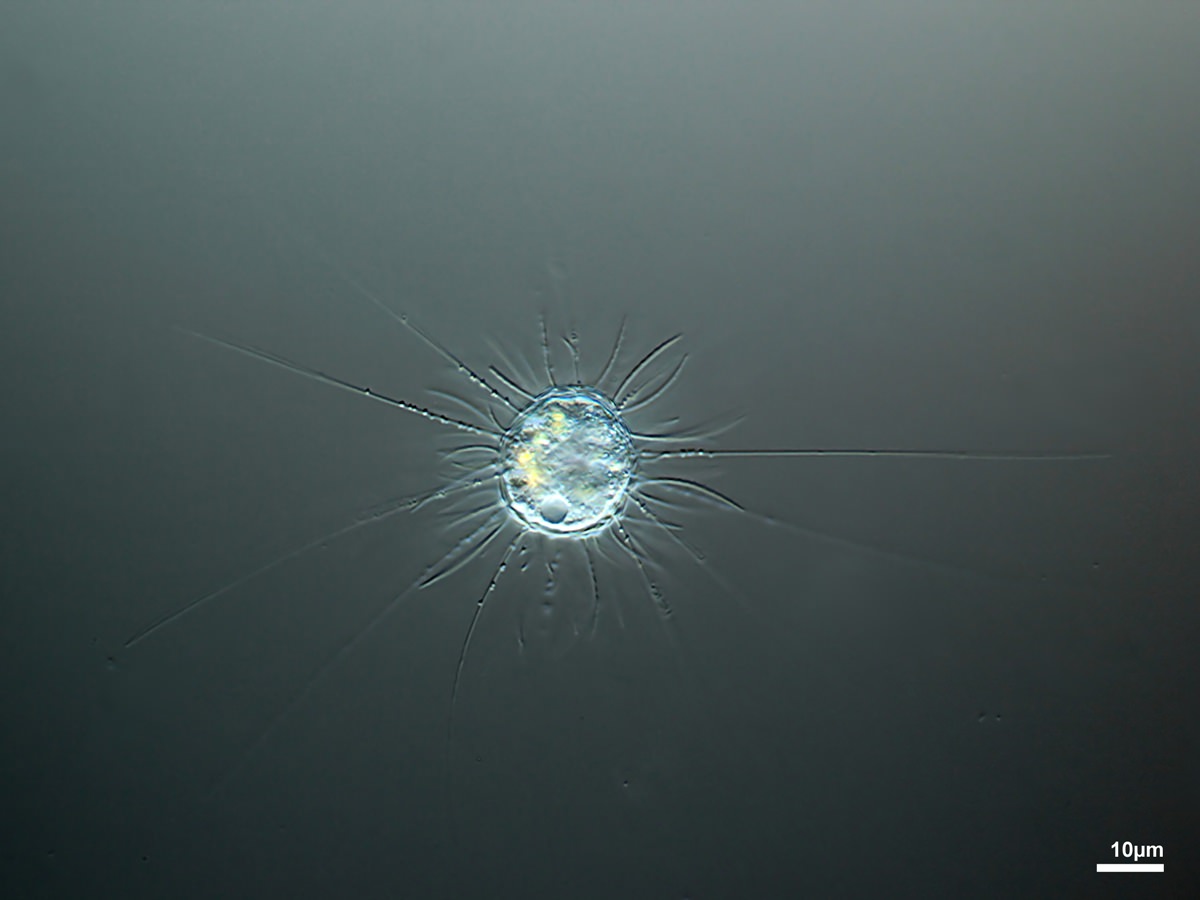
Raineriophrys echinata (Rainer 1968) Mikrjukow 2000
3. Chlamydaster Rainer 1968
Protoplast surrounded by a mucous coat. Discrete elements (scales, spicules) are absent.
Protoplast surrounded by a mucous coat. Discrete elements (scales, spicules) are absent.
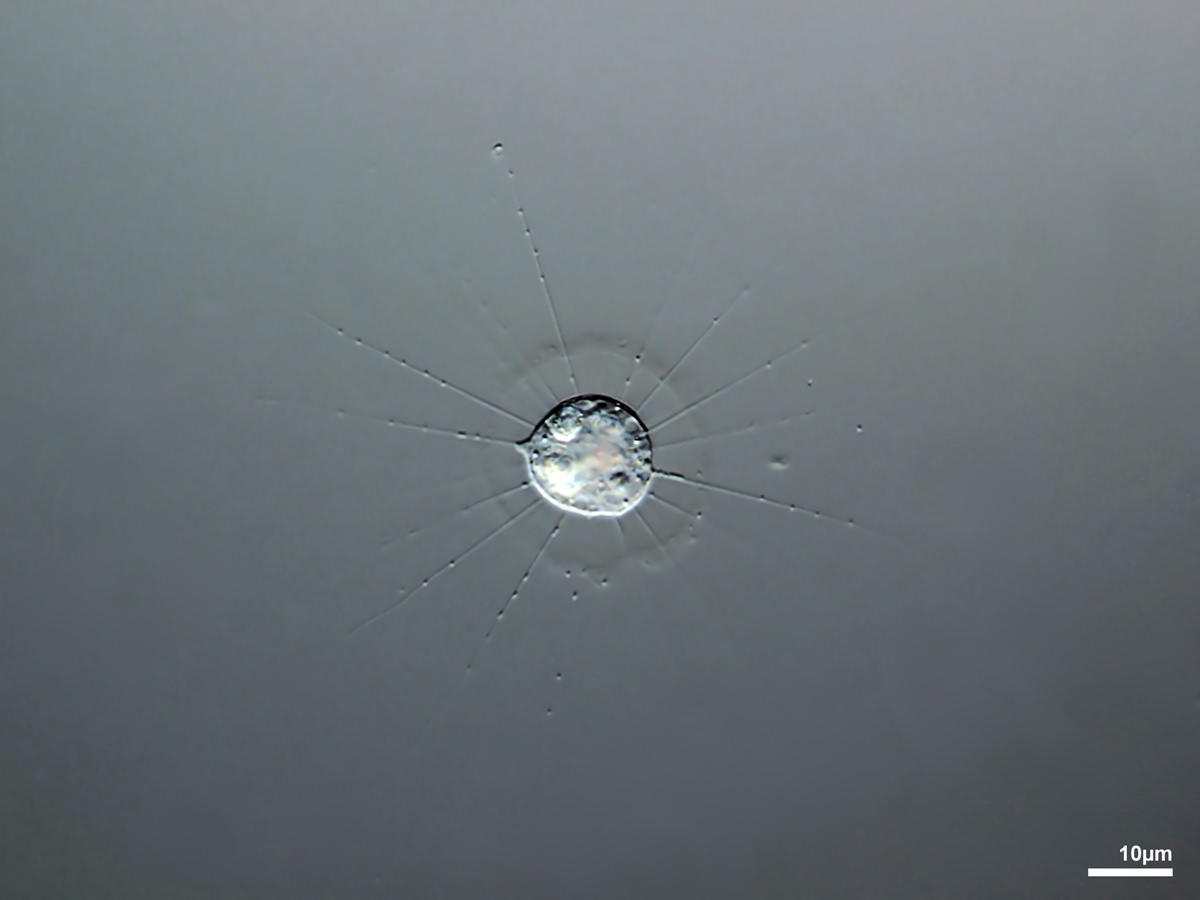
Chlamydaster sterni Rainer 1968
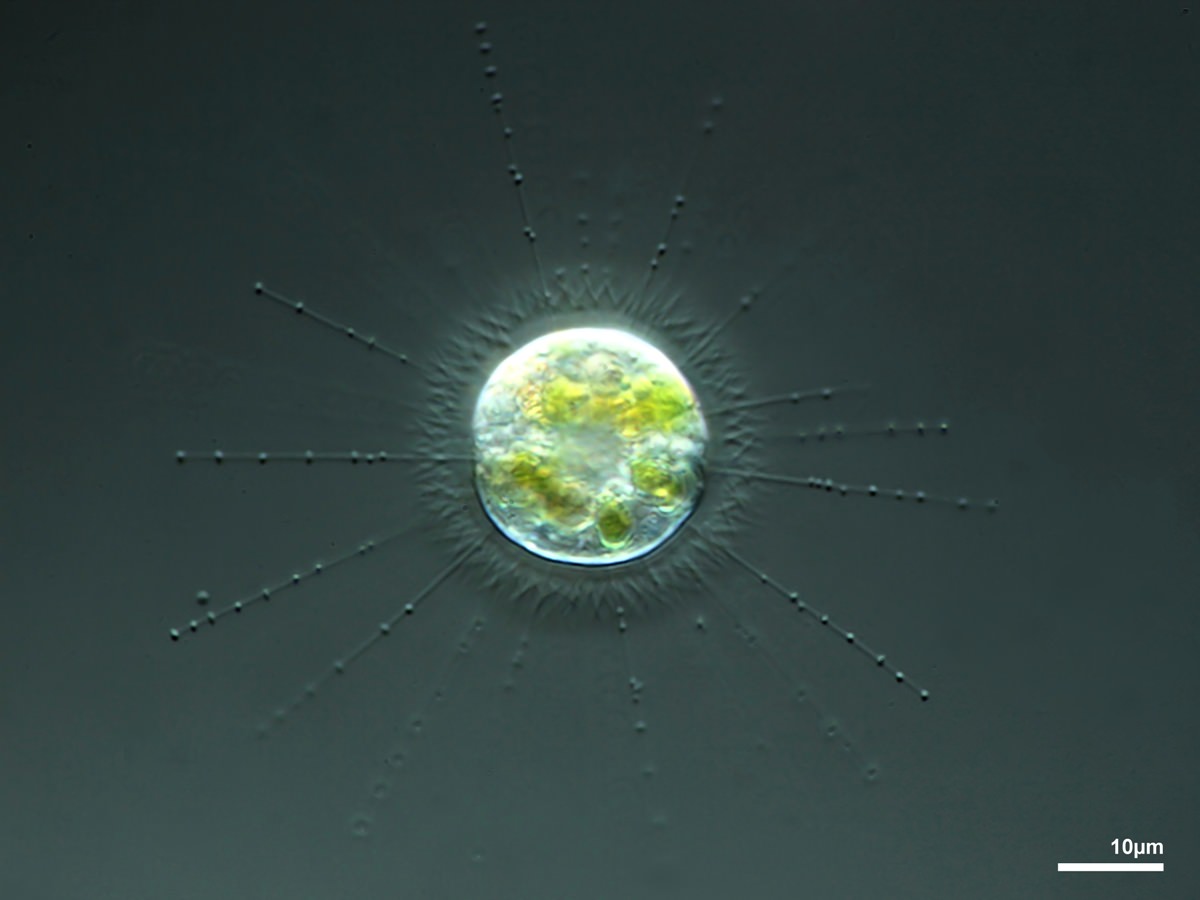
Chlamydaster laciniatus (Penard 1904) Rainer 1968